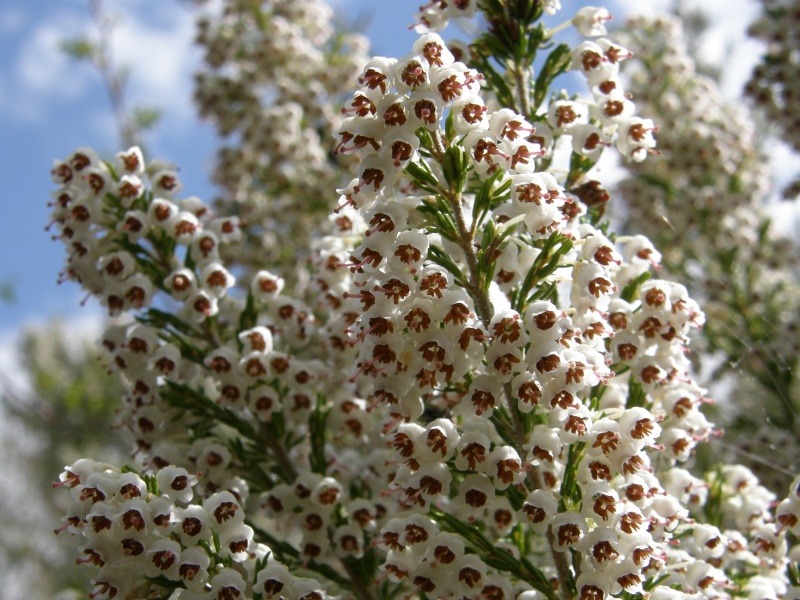Erica arborea (tree heath) is a species of flowering plant (angiosperms) in the heather family, Ericaceae. There are disjunct populations in Africa including the Ethiopian Highlands, the mountains of Ruwenzori and the Cameroon Mountains. In Africa it is normally referred to as giant heather. It is native to the maquis shrublands surrounding the Mediterranean Basin north to Bulgaria and west to Portugal and the Canary and Madeira Islands. Naturalised populations occur in south-eastern Australia.
The wood, known as briar root (French: bruyère), is extremely hard and heat-resistant, and is used for making smoking pipes.
Erica arborea is an upright evergreen shrub or small tree with a typical height in the wild of some 7 m (23 ft), especially in Africa, but more typically 1–4 m (3–13 ft) in gardens, bearing dark green needle-like leaves and numerous small honey-scented bell-shaped white flowers. It is a calcifuge, preferring acid soil in an open sunny situation.
The wood, known as briar root (French: bruyère), is extremely hard and heat-resistant, and is used for making smoking pipes. The football-sized tubers are harvested at the age of 30 to 60 years. They are cooked for several hours, then dried for several months before they are further processed. The wood is light brown to reddish brown, often beautifully textured, very hard, heat-resistant and does not affect the aroma of pipe tobacco smoke.
The wood is also used for making jewelery, fountain pens and knife handles.
